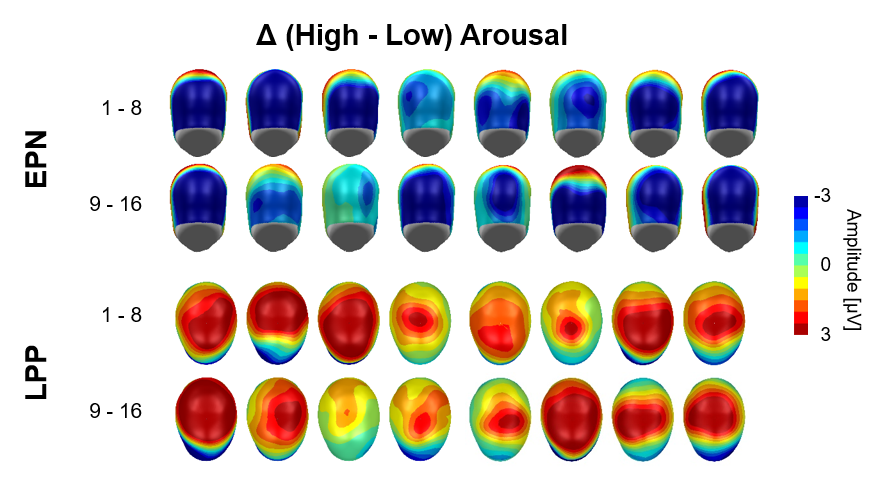The Emotional Brain
We investigate principles of emotion processing using neuroscientific methods. Our research focuses on the process of affective stimulus evaluation. We encounter many stimuli in our environment, all of which are evaluated based on their emotional meaning and significance. The concept of 'motivated attention' expresses that emotional stimuli direct our attention. This rapid and pre-verbal process can be examined through event-related potential (ERP) measurements. To this end, participants are shown emotional (pleasant and unpleasant) and neutral images. The 'early posterior negativity' (EPN) and the 'late positive potential' (LPP) are two components of the ERP that reflect the relationship between emotion and attention. The video illustrates the selective processing of erotic versus neutral stimuli in the first 600 milliseconds after stimulus presentation. The EPN is recognizable in the time range of 150-350 ms as a negativity (blue) over posterior regions, followed by the LPP (positivity, red) over centro-parietal regions.

The individual brain
A specialty of our research group is to complement the traditional group approach with the analysis of individual cases. This so-called 'case-by-case' approach allows for the investigation of affective stimulus evaluation at the individual level. The 'case-by-case' approach can reveal principles of emotion processing that are common to all individuals in the research sample, rather than representing the group as a whole, i.e., a "hypothetical person." This can provide strong evidence for universal principles of emotion processing. The figure shows the EPN and LPP effects for individual participants, comparing the processing of erotic and neutral images. All participants in the study group exhibit these effects.
The Empathetic Brain
Empathy motivates helpful and cooperative behavior and plays an important role in social interactions and personal communication. In a study, we asked how we respond to stimuli that are significant to our partner, as they indicated a painful stimulus. In the video, the reactions on the left side show how we process a cue indicating that we ourselves will receive a mild painful stimulus. In contrast, the right video shows the brain reactions when the cue indicates that our partner will receive the mild painful stimulus. The results show that a state of empathy directs attention to stimuli that are significant to others, in a similar way to how we respond to stimuli relevant to ourselves.
